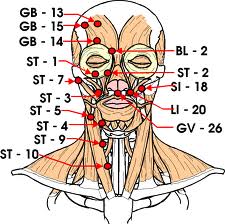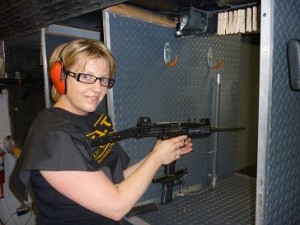April 27, 2012
Deciphering handwriting
Filed under: Murderati blogs,Research — PD Martin @ 12:34 am
A while ago on Murderati I started a research ‘series’ and I was going to blog once a month about some of the weird and wonderful stuff I’ve uncovered in the name of research. I started off with blogs on real-life vampires (Research with bite), cults (Part 1 and Part 2), kung fu (Everybody was Kung Fu fighting) and being a hitman (The life of a hitman).
And then it seems I totally forgot about my research ‘series’. Guess I dropped the ball, huh? Having said that, there are probably only a few more seriously interesting research facts I’d blog about. Today, I’m going to look at handwriting.
 Handwriting was something I researched for my first crime novel, Body Count and like most of the things I research, I found it fascinating.
Handwriting was something I researched for my first crime novel, Body Count and like most of the things I research, I found it fascinating.
Many criminals communicate with the police or press during the time they’re criminally active. For example, serial killers such as the Zodiac killer in San Francisco made phone calls and frequently wrote to the local newspapers, the BTK killer in Wichita wrote letters to the media and left written communications at some of his victim’s homes. His last known letter was left in an intended victim’s house. It simply told the woman that he got tired of waiting for her in the closet. Lucky for her he wasn’t feeling patient that day.
Written communication is also a key in other serials cases (e.g. Unabomber) and of course in kidnapping cases — the ransom note. Some of the most famous ransom notes include those from the Lindbergh case and JonBenet Ramsey case. Often, much attention is given to whether the ransom notes are forgeries used to mask a murder. This was determined as the situation in the more recent case of Zahra Baker.
There are loads of things that forensic examiners look at when it comes to documents, such as restoring erased or obliterated writing; analysing inks and papers; linguistic analysis; and analysing handwriting for the author’s state of mind. It should be noted, that forensic document examination is different to the handwriting analysis known as graphology. Graphology looks at handwriting in terms of psychology (what a person’s handwriting can tell us about their personality), but its scientific merit is almost zilch in the forensic and psychology communities.
In addition to examining the paper (brand and type, any imprints, watermarks, thickness, opacity, etc.) they also look at the ink used and can often narrow it down to a specific brand and colour of pen. This may or may not be useful!
Forensic linguistics studies language and its use. Linguists will consider regionalisms and can often tell that a person was raised or currently lives in a particular area of a country and it also looks at individual patterns of language, such as favourite words and phrases. This can be useful once a suspect is identified, or if the communications are made public and someone recognises the style of language.
One of my favourite research discoveries was “lifts”. When you’re writing something by hand, you naturally pause and lift the pen off the page — even if only for a millisecond. These are visible under close examination and called lifts. But what’s interesting is that generally an unusually high number of lifts indicates that the person is lying, under stress or that their thoughts are scattered. Conversely, if a note has virtually no lifts it indicates the note has probably been rehearsed. In the case of a ransom note, often these are written out several times (rehearsed) by the kidnappers and so by the time they get to the final note that they actually send, it’s simply writing out the previous draft.
Stress can also be seen in what document examiners call “line quality”, how smooth the pen passes across the paper. Angle of contact, tremor and jaggedness all increase if the writer is stressed, excited, nervous or frightened. So this is another thing that document examiners consider when looking at notes or any type of handwriting. And although it is used to judge someone’s state of mind, it’s still very different to graphology.
So, I know most of us use computers these days, but check out some of your most recent handwriting and see if you notice anything interesting!


 This is another instalment in my research series and I’ve just realised I seem to be working backwards. The posts on my research into
This is another instalment in my research series and I’ve just realised I seem to be working backwards. The posts on my research into  While the Ten Killing Hands are fascinating, probably the most interesting research I did was on dim-mak. Dim-mak is often referred to as the death touch, and is based on the premise that striking certain acupoints can cause instant or delayed death. It sounds like the stuff of fairytales — of legends and movies like Kill Bill — but it’s real. And in fact, Uma Thurman’s Five Point Palm Exploding Heart Technique in Kill Bill is about five blows, in a specific order, which will stop blood flow to the heart. And that is dim-mak.
While the Ten Killing Hands are fascinating, probably the most interesting research I did was on dim-mak. Dim-mak is often referred to as the death touch, and is based on the premise that striking certain acupoints can cause instant or delayed death. It sounds like the stuff of fairytales — of legends and movies like Kill Bill — but it’s real. And in fact, Uma Thurman’s Five Point Palm Exploding Heart Technique in Kill Bill is about five blows, in a specific order, which will stop blood flow to the heart. And that is dim-mak. Although other organs are targeted, the heart is often the focal point for dim-mak strikes. The pressure points attack the heart in one of three ways – heart attack, ventricular fibrillation or something called heart concussion. Again, Dr Kelly’s book came in handy! The medical, Latin term for heart concussion is commotio cordis. It’s not a common cause of death, not something you read about much in the newspaper, because it’s rare to have a strike directly to the heart that’s hard enough to cause it. Most reported cases involve sporting accidents, like trauma from a hockey puck, a baseball, a hockey stick, etc. But obviously if a trained Kung Fu practitioner can elicit enough force…
Although other organs are targeted, the heart is often the focal point for dim-mak strikes. The pressure points attack the heart in one of three ways – heart attack, ventricular fibrillation or something called heart concussion. Again, Dr Kelly’s book came in handy! The medical, Latin term for heart concussion is commotio cordis. It’s not a common cause of death, not something you read about much in the newspaper, because it’s rare to have a strike directly to the heart that’s hard enough to cause it. Most reported cases involve sporting accidents, like trauma from a hockey puck, a baseball, a hockey stick, etc. But obviously if a trained Kung Fu practitioner can elicit enough force… Of course, the acupoints aren’t just about dim-mak and martial arts. The more commonly known use of these acupoints comes from Chinese healing — acupressure or acupuncture. The points are struck to cause pain and death, but they can also be massaged or stimulated with acupuncture for healing purposes. They go hand in hand, for use as a weapon or as a healing tool. Yin and Yang.
Of course, the acupoints aren’t just about dim-mak and martial arts. The more commonly known use of these acupoints comes from Chinese healing — acupressure or acupuncture. The points are struck to cause pain and death, but they can also be massaged or stimulated with acupuncture for healing purposes. They go hand in hand, for use as a weapon or as a healing tool. Yin and Yang. By these definitions, cults have been around for thousands of years. For example, some hunter-gatherer tribes had a cult-like belief system and structure with the shaman as guru; the Assyrians around 880BC have been described as a tree-worshiping cult; and let’s not forget the recently revived Knights Templar and Opus Dei, which can easily be described as cults.
By these definitions, cults have been around for thousands of years. For example, some hunter-gatherer tribes had a cult-like belief system and structure with the shaman as guru; the Assyrians around 880BC have been described as a tree-worshiping cult; and let’s not forget the recently revived Knights Templar and Opus Dei, which can easily be described as cults. Risk factors include:
Risk factors include: As many of you know, I’m currently working on a new series (very exciting!) and the main character is very different to Sophie – she’s very “dark”, and also used to handling much more than a 9mm.
As many of you know, I’m currently working on a new series (very exciting!) and the main character is very different to Sophie – she’s very “dark”, and also used to handling much more than a 9mm.
 Seen the news about the women who were rescued by the Turkish police yesterday? Remind you of anything? Like
Seen the news about the women who were rescued by the Turkish police yesterday? Remind you of anything? Like  Okay, I’m officially blogging. That’s right, I’ve joined the ranks of the switched on, technically savvy communicators who blog. Of course, I don’t really have a clue what I’m doing, but here goes…
Okay, I’m officially blogging. That’s right, I’ve joined the ranks of the switched on, technically savvy communicators who blog. Of course, I don’t really have a clue what I’m doing, but here goes…